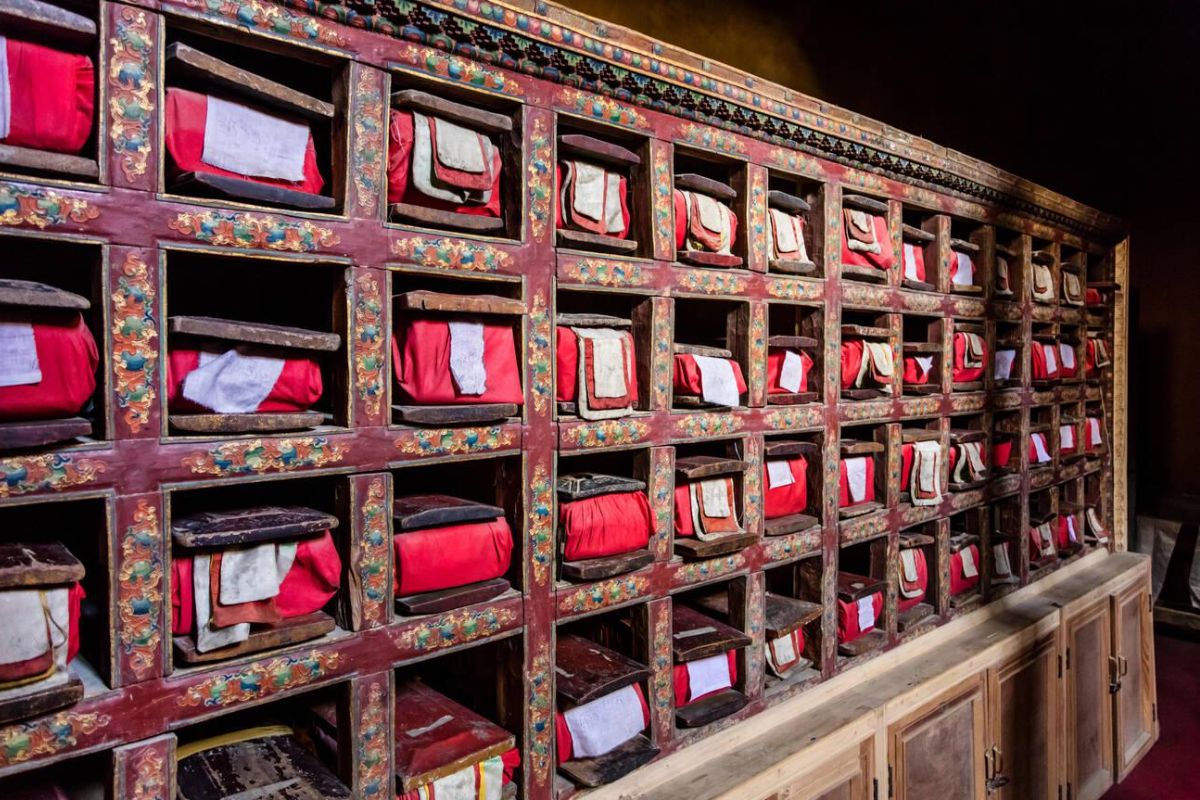Leh Palace: A timeless marvel in the heart of the mountains
Once a royal residence, now a historic icon overlooking all of Leh. Read more to find the story of Leh’s Palace.

By Shreya Dwivedi
06 Apr, 2025
India’s forts have always been extra — royal drama, ancient intrigue, and that unmistakable flair for the fabulous. Most of them are all bling, beauty, and baraat vibes.
So naturally, when I picked Leh Palace for a blog, I thought — “Okay, yeh bhi ek fancy fort hi hoga, carved pillars, chandelier vibes, thoda Mughal-e-Azam drama.”
But then I saw it.
Plain. Rugged. Raw. Real.
And I’ll admit it — for one second, I almost dropped the idea. Almost. But then I looked again… and that’s when the story hit me & realized this is going to be fun, Yeh palace kuch toh hatke hai boss!
The history: Where kings built with purpose
Leh Palace—also known as Lachen Palkhar—was commissioned in the early 1600s, when Ladakh's King Sengge Namgyal was on a roll. He was wealthy from trade, respected for his diplomacy, and honestly, a bit of a visionary. He wasn’t about frills—he was about function and legacy.
The palace became the heart of the Ladakhi royal kingdom, a residence and symbol of power until the 19th century when the Dogra forces from Jammu wanted to expand their kingdom to Leh. So they forced the royal family to flee to Stok Palace. But even in abandonment, Leh Palace stands tall—literally and metaphorically. Matlab, itna drama toh kisi soap opera mein bhi nahi milega.

Leh Palace from bird's eye view.
The architecture: Practicality meets poetry
Now this is where Leh Palace truly breaks the mold. Instead of the usual ornate carvings and delicate filigree, you’ll find nine stories of solid stone, mud bricks, timber, and sand—all locally sourced and naturally insulating against Ladakh’s extreme climate.
The architecture is distinctly Tibetan-style, modeled after the Potala Palace in Lhasa. It’s not just an aesthetic choice—it’s a cultural bridge between Ladakh and Tibet, a reflection of shared faith, art, and royal lineage.
Each level of the palace had purpose: the top floors were reserved for the royal family, while the lower ones housed servants and storerooms. Efficiency was royalty’s best friend up here. Bilkul no-nonsense, Ladakhi style.
Strategic to its core
Built on the Tsemo ridge, Leh Palace was more than just a home—it was a fortress. Its elevation offers panoramic views of Leh and the surrounding valley, a vantage point perfect for both beauty and battle.
This wasn't a place of leisure. It was designed to withstand sieges, protect its people, and dominate its terrain. Its unadorned exteriors hide layers of strategic brilliance, making it a perfect symbol of Ladakhi resilience. Samjhe bitwaa? Yahan luxury nahi, legacy hai.

Buddhist prayer books at Leh Palace
Did you know?
- The palace has nine stories—more than most forts in India.
- At one point, the palace hosted rituals, royal meetings, and mountain diplomacy.
- Despite looking minimalist, it’s built to survive both time and temperature.
- It's like a royal Airbnb from the 1600s—functional, beautiful, and sustainable!
Planning your visit?
- Where: Just above Leh town—you’ll spot it looming like a shadowy guardian
- When: Open 7 AM to 4 PM, best visited during early morning or golden hour
- Entry Fee: ₹25 for Indian citizens, ₹300 for foreigners approx (These prices may vary)
- Best time of year: May to September, unless you’re a winter warrior
- Tips: Wear shoes that don’t hate stairs, carry water, and give yourself time to just… be

Window view from Leh Palace
Why you need to see it IRL
Leh does not need a reason to visit! it's that rare kind of place that finds you before you find it. Standing before Leh Palace, you don’t just see Tibetan architecture—you feel the weight of Ladakh’s royal legacy, the wisdom in its design, and the stories echoing through its bare, beautiful walls.
So if you're tired of textbook forts and Insta-aesthetic palaces, take a detour to Leh. The palace might not shimmer—but it stands, bold and unshaken, just like the mountains around it. Yeh kahani hai un rajaon ki jo glam nahi, game strong le kar aaye the.
And trust us—it’s unforgettable!
thehosteller
Destinations
Destinations







